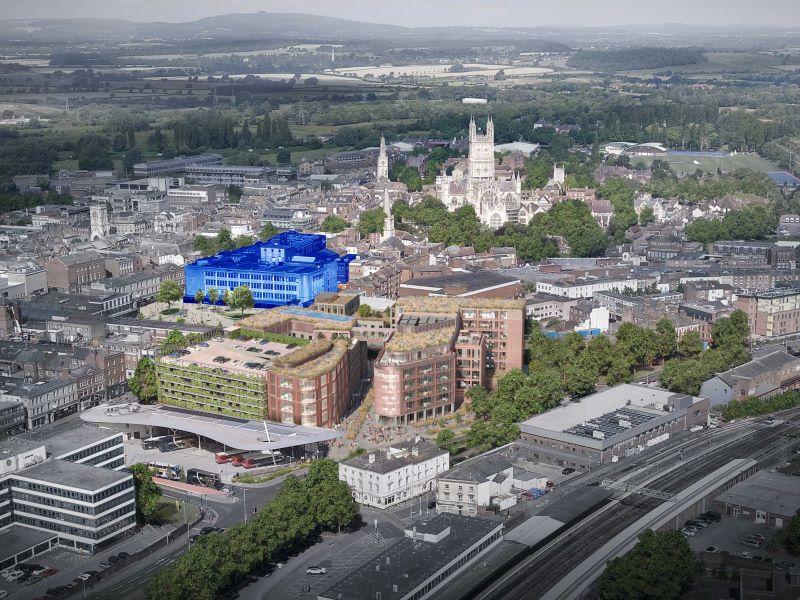Debenhams was once the biggest department store group in the UK and occupied a seemingly unassailable position on the high street. So, when news broke that Debenhams was set to close all of its 124 stores, the shock was felt at a national level. However, more than a national story, this was 124 local stories. Communities across the country wondered what might become of these large, often iconic buildings, where new jobs would be found, and whether their town and city centres could recover. This was certainly true of Gloucester.
However, the demise of this beloved store represented an opportunity for the University of Gloucestershire, and for the city itself. The university’s health provision had been growing and projections forecasted significant space issues within a few years. Other disciplines were also outgrowing their facilities, and the university lacked a really visible presence in Gloucester.
So the university has stepped in to transform the former department store building into a dual-use space offering teaching and learning facilities alongside community and public services.
Civic engagement work and institutional priorities
This is a great example of where community engagement and support are aligned with institutional needs and priorities. This win-win combination results in the best outcomes as all parties can see the benefits of investing time and effort in the project. These sorts of developments are not possible without the support of local communities and partners. So, here is some useful advice for how to achieve this:
1. Be clear on how a development or project will address a real institutional priority; without the driving force of a demonstrable business need, any project is doomed to failure. If the university had not acquired the Debenhams building, for example, it would have had to develop additional facilities in some other way and in some other place.
2. Build your business case. You need to be able to present facts, figures and analysis on how the project will benefit the local community and the institution, ideally in the form of both quantitative and qualitative evidence. Gloucester commissioned a report by BiGGAR Economics which showed that construction alone will generate £2.4 million gross value added (GVA) in Gloucester and £67.8 million GVA across the UK; and when operational, the new campus will generate £86.3 million GVA for Gloucester and £751.4 million GVA across the UK.
3. Once you have developed your business case, it is then important to form partnerships with key local stakeholders based on mutual and supportive interests: in this instance, the local authority and local MP’s interest in finding new purposes for the city centre and common interests in cyber technology with private developers.
4. There must be ownership from the very highest levels in the institution for any large-scale project. That is likely to start with the university’s governing body. Clear lines of authority must then be implemented to ensure swift decisions, as deadlines for funding and the needs of other organisations are unlikely to wait for cumbersome university decision-making processes to conclude. It will be much easier to secure buy-in at the top of the university if the project will help advance wider institutional aims. The Debenhams building, for example, is now the centrepiece of Gloucester’s bid to the government’s Levelling Up Fund.
No university has a right to the support of its community; that support must be earned. Through regeneration and restoration, enabling the development of personal talents, creating more fulfilling lives and complementing the ambitions of key local partners, universities can become an engine of growth and prosperity within their communities.
Matthew Andrews is secretary and registrar at the University of Gloucestershire.




comment